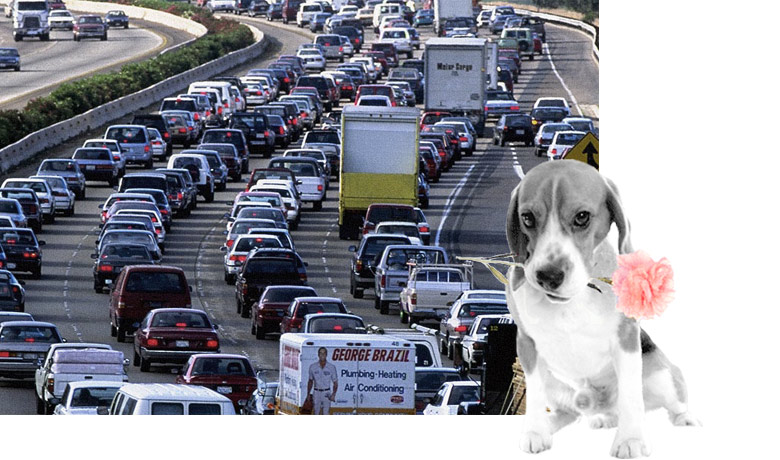There's no doubt that "digital" or online advertising for car dealers is essential, but it seems that's all everybody talks about anymore... and they certainly never mention radio advertising.
We encourage dealers to give an honest look at where their potential customers are. Of course they're online, but they still watch A LOT of TV, and yes, they still listen to the radio too.
Roy Williams of the Wizard of Ads has always been a big fan of radio, and in his recent Monday Morning Memo, he shares his methods of using (very affordable) radio advertising to generate more leads while cutting online ad spending in half. Sounds intriguing, huh?
If you get nothing else out of this article, please scroll to the last section, "fundamental truths." #2, #6, and #7 are absolutely crucial.
Here's Roy.

Radio versus Pay-Per-Click
You hear a lot of talk these days about how no one listens to the radio anymore.
Interestingly, the people who make these claims offer no evidence beyond the fact that commercial free music can be obtained through online streaming. This reminds me of that famous malaprop by Yogi Berra, “No one goes there anymore. It’s too crowded.”
If you want to see raw numbers, look at the Nielsen Audio Ratings. But I submit to you, as a supplement to those happy numbers, a few observations fueled by my investment of tens of millions of dollars in advertising expenditures each year for more than 25 years.
Radio advertising is more cost-effective today than it has ever been, mainly because rates have been suppressed by the myth that “no one listens anymore.”
This is great for media buyers. Bad for station owners.
Four of my friends own large, online companies, and each of them tells me the exact same thing. “To do real volume online, you’ve got to have a big enough markup to let you spend 30 to 35 percent of gross sales on marketing.” The first time I heard this, I couldn’t believe my ears. Most of the advertisers I’ve known spend 5 to 6 percent of gross sales on advertising. The really aggressive ones spend 10 to 12 percent. “You’ve got to be selling products with a 10 to 20x markup or you’re not going to make any money using pay-per-click,” one of them told me while the other three nodded in agreement. The smallest of their online companies does almost $40,000,000 a year. The largest did $85,000,000 last year and one-third of that was spent in online marketing.
Fortunes are being made online. This isn’t a secret.
But any brick-and-mortar business that abandons broadcast media – and I include television in that definition – and tries to replace broadcast with pay-per-click or social media or content marketing is going to lose a fortune online.
I’ve seen it happen again and again.
Ryan Deiss is the principal of digitalmarketer.com, a highly regarded educational site for persons who need to know how to make online advertising work. When Ryan spoke to a roomful of long-term radio advertisers recently, he showed them the 8 sequential things that online marketing can accomplish. The first of these 8 was awareness. “No one in this room should be spending a penny online for awareness,” he said. “The cost of creating awareness online is incredibly expensive compared to radio. You just need to maximize the online traffic that radio can easily drive to your website.”
He spent the rest of that day telling those advertisers how to generate more online leads and increase their online closing ratios while cutting their online ad budgets by half.
Ryan got a thunderous applause at the end of his session. People love the advice of honest, straightforward experts.
One of the business owners in the room that day was Ken Goodrich, the owner of Goettl (rhymes with kettle) Air Conditioning in Phoenix, Los Angeles, Las Vegas and Tucson. When Ryan’s session was over, Ken raised his hand to say, “My cost of lead generation for A/C system replacement was about $441 per lead, roughly the national average for my category, until I cut my online budget by half and moved all that money into 52-week radio. Two years later, the sales volume of my 78 year-old company had more than doubled, and my cost per online lead these days bounces around between $39 and $47.”
Ken Goodrich went on to make it clear that his customers are still going online before they call him. Some of them are reading reviews and some are just looking for his phone number, but most are typing the name of their city and “air conditioning” into the Google search string. Goettl Air Conditioning pops up, of course, alongside all its competitors. But unlike the other companies listed in those search results, Goettl leaps off the screen. “Hey! I know those guys!” says the prospective customer. Goettl gets the click, the call, and the sale.
Consistent radio advertising creates echoic retention, a powerful recall cue.
But the credit that belongs to radio is often given to SEO consultants and other digital marketing weasels who pretend that broadcast is dead. Remember what Goodrich told us? His customers are still going online before they call and they’re still seeing his name pop up. But it was only after he became a household word through radio that a much higher percentage of them began clicking “Goettl.”
My only goal today was to open your eyes a little wider to seven fundamental truths you’ve always known:
- Fifty percent of the population in your city spends enough time listening to broadcast radio each week to make them easily and cheaply reachable through that medium.
- The best way to use radio is to become a household word before the customer needs what you sell, then wait for them to need you. This requires a 52-week schedule.
- The customer is still going to go online before they call. (Ryan Deiss told us that 94% of all retail products and services were sold by brick-and-mortar stores in 2016, but that 97% of those purchases were made by customers who went online before they bought from those brick and mortar stores.) Your online presence definitely matters.
- The cost of generating awareness through radio is a tiny fraction of the cost of generating similar awareness online. In 2016, my cost of generating a 3-frequency each week (reaching the same listener with the same message 3 times,) 52 weeks a year, ranged between 14 cents and 72 cents per person/per year, depending on the city. Fifty-two week radio is the best way to achieve involuntary, automatic recall, and effectively own the hearts and minds of up to half the people in your community.
- The biggest mistake made by radio advertisers is that they too often try to create a sense of urgency. This works okay for products with a short purchase cycle, like food and entertainment, but it’s a lousy way to build a relationship with the customer.
- Businesses don’t fail because they were reaching the wrong customer. Businesses fail because they were saying the wrong thing.
- Nothing matters so much as your ad copy. When you’re saying the right thing, people remember it and repeat it. Your customer is surrounded by influencers. Quit trying to target the perfect customer. Just win the hearts of whoever happens to be listening.
Roy H. Williams
Original article: http://www.mondaymorningmemo.com/newsletters/radio-versus-pay-per-click/


